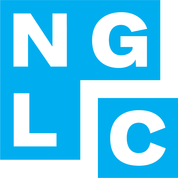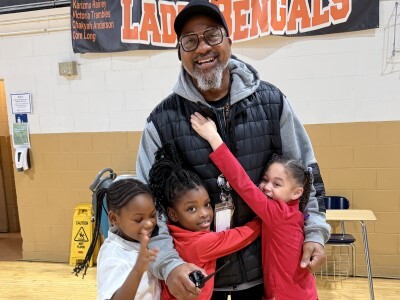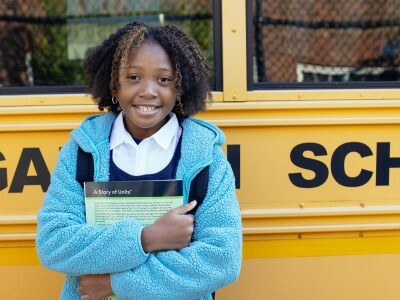Highlights from the High Country: The Colorado Convening
Topics

When educators design and create new schools, and live next gen learning themselves, they take the lead in growing next gen learning across the nation. Other educators don’t simply follow and adopt; next gen learning depends on personal and community agency—the will to own the change, fueled by the desire to learn from and with others. Networks and policy play important roles in enabling grassroots approaches to change.
Practitioner's Guide to Next Gen Learning
Seven key insights about the work of transforming learning from regional network leaders.
One network mantra I have heard is “Never work alone”… because our thinking and ideas are made better by others.
—Curtis Ogden, Interaction Institute for Social Change
We should never overlook the benefits of bringing many voices and perspectives together around a shared topic or challenge. Thanks to our growing community, we’ve all gotten smarter about designing for learning. As a co-convener working with partners or within a larger ecosystem serving next gen learning ideals, NGLC is mindful of our relationships and the balance of giving and receiving.
To that end, we convene an intentionally diverse group of educators, funders, students, researchers, technical advisors, and local leaders. We pay attention to shared experiences and conditions that enable all participants to hear and be heard, reflect, and create meaning. We allow for connection, celebration, imagination, play, laughter and fun. Many of us participate in networked learning in many forms and even within networks of networks. (It gets complex fast, right?)
This edition of Friday Focus: Practitioner’s Guide to Next Gen Learning is dedicated to sharing gifts from the network that emerged during the recent NGLC-NGSI convening in Colorado. Sarah Luchs, a K-12 program officer at NGLC, explores seven key insights from convening participants about the work of transforming learning:
- Honor the strengths and character of local communities
- Give students a voice...and listen to them
- Design for equity
- Collaborate with peers to solve problems
- Engage with the research
- Remain open to new possibilities
- Take a break to celebrate and appreciate

1. Connect to Place
Fun Fact from Jill Hawley, Gates Foundation, and Denver resident: 200 named peaks are visible from Denver, and 32 of them tower at 13,000 feet. Due to the city’s mile high elevation and air having less water vapor than it would at lower altitudes, Denver’s bright blue sky really is bluer than in many other cities.
Our love of all things local is more than a trend or an investment in local economies. In the spirit of place-based learning for adults, local ties honor the strengths and character of local communities, geographies, and cultural identities. Knowing and experiencing specific aspects of a place—its people, history or culture—creates caring relationships and connections.
Every network member has ties to a local context, and one intent of network convenings is to build empathy and understanding around the uniqueness of the host location. When together on site, we ask, “In what ways are locally supported schools important to the communities they serve? What unique opportunities exist here to accelerate personalized learning?” Network members are curious to explore both similarities and differences.
Colorado, we learned, offers many assets:
- Teachers and leaders leverage the state’s graduation framework.
- Colorado Education Initiative (CEI) provides intermediary support that includes seeing is believing tours to demonstration schools, an annual showcase of promising practices, and dedicated supports for innovation.
- Denver Public Schools’ Imaginarium is designed to rethink and personalize learning in an urban context.
2. Listen to Students
There was such a powerful and honest discussion about the need for quality student-teacher relationships. Students shared their insights about how they learn and the necessity of feeling comfortable with their teachers, specifically mentioning that they wanted to feel known; and that teachers acknowledge them as human beings, not robots. Students explained their need for extra time due to personal reasons, and they expressed appreciation for how their teachers supported these needs.
—David Hass, Lake County Schools, FL

Panel of students from across Colorado
Caring educators are always seeking better ways to meet student needs. They know listening is key. Listening with an open mind. Staying curious. Being fully present. But it’s also true that many of us caring educators forget, get stressed, and interrupt, or have a tried-and-true response we’re waiting to deliver in the next breath. We’re only human. Still, listening and empathy provide the impetus for understanding and creative solutions. In Denver, we listened with our hearts to what students say they want and need:
- What’s important to me is making sure I have a stable understanding of who I am and what I want to do...Social justice drives my whole life. The system wasn’t designed to support all kids [kids that look like me]. Equity actually needs to happen. Teachers need to educate themselves on how the system under-serves students of color. Otherwise, get out, because you aren't doing anyone any favors.
- I struggled in my 9th grade year. Sometimes it’s hard to know where you want to be at the end of this year, knowing the steps, then figuring out how to get there.
- Failing is OK. You need to know that. Teach your students to know this. It’s not the end of the world. It’s hard to accept and hard to get back up and try again, but it’s OK.
- I'm terrified about paying for college - not just bachelor's, but master's, doctorate... I've gotten all the prep I can, but how are you going to pay for that?
- Build connections with us. Students have lives. Just because we do it [school] doesn’t mean it's our whole life. We need time designated to this [like advisory or 1:1 time].
- We are all humans. I am just as important as you and you are just as important as me. You have to be willing to put in the effort. Show me that I matter.
3. Design for Equity
Personalized learning is inextricably linked with equity, so it only makes sense to have these conversations together. Both PL and equity work require the systems and structures that surround relationships to honor and acknowledge every person’s unique strengths, passions, and contributions to common work.
—Karen Perry, Henry County Schools, GA
In a dynamic session on equity, Caroline Hill pushed participants to redefine their approach to design thinking. She asked, “how might we make equity a cornerstone for a systems change with the goal of benefiting all learners?”
Caroline’s notion that we might consider designing learning experiences for students at the margins, who have been systematically disadvantaged, and in so doing, benefit all learners really struck me as genius. We have the ability to empower this next generation of learners. For me, it directly connected to the students’ reflections because we could actually determine what would make an impact on learners (i.e. quality of teacher- student relationships).
—David Hass, Lake County Schools, FL
Many schools in the NGLC network are designed to serve students and their communities. It’s not unusual for these schools to serve high percentages of students of color, as well as students with disabilities. In many cases 90% of students in these schools receive free or reduced lunch. Yet those groupings are largely generic; they don’t reflect individual needs, nor do they reflect the support that a transgendered or homeless child might appreciate.
Prompted by text-based discussions, identity conversations, and a review of 10 cultural beliefs currently reflected in our inequitable system of education, we all left wondering: “are we designing with equity or for equity?” There is a subtle yet powerful difference therein.
4. Problem Solve with Peers
School visits strengthen our community of practice and give us an opportunity to see personalized learning in action at various stages of implementation. Hopefully, we contributed helpful comments and provided encouragement. This work is hard, so being surrounded by like-minded and committed practitioners is essential in tackling similar issues, no matter where the school is located.
—Karen Perry, Henry County Schools, GA
Consistently, network members comment on the value of school visits for sharing practice, implementation successes, and ongoing challenges. Visits are not predictable because no two are ever the same. We’ve learned to allocate more time to the school-based experiences. We practice reciprocity by supporting a problem of practice selected by the schools we visit.

Network members visited two schools in Colorado Springs D11: Doherty High School, profiled here, and Trailblazer Elementary. Trailblazer, the more mature site, is nearing the end of a three-year implementation period. Their visionary principal is retiring, so staff want to safeguard the culture of cohesion and progress from unnecessary disruption.
It was powerful to watch and support a team of lead teachers who want and need additional ownership and leadership of their school. They were well on their way to finding their own agency in how they want to influence the selection of a new school leader.
—Greg Klein, Rogers Family Foundation, Oakland, CA
Leadership changes can and do threaten the stability and continued progress of new or innovative school designs, but that’s not a given. Collectively, we can design for greater degrees of ownership, distributed decision making, and engage in practices that mitigate the negative consequences of leadership turnover. For example, using leadership competencies to prepare and hire talent may also prove helpful.

5. Engage with the Research
As part of our three days together in Colorado, three research partners led interactive roundtables with network members.
- RAND presented the latest findings of the longitudinal study of personalized learning.
- FSG shared quotes from experienced leaders in personalized learning sites.
- Center for Reinventing Public Education and Center for Public Research and Leadership highlighted essential differences between implementation and innovation.
In the spirit of a more dialogic approach, network members aren’t expected to accept information at face value. Rather, they are invited to share honest reactions, reflections, wonderings, and contextualized applications. Challenges are welcome.
Possibly the most provocative discussions occurred around the roles of innovation and implementation. When and how do we shift our focus between the two phases? What are the implications for management and communication strategies when we shift between the two? Do invisible mindsets create confusion between these approaches?
My takeaway was that very different leadership styles are needed for supporting innovation than for ensuring implementation of an established system... I’m interested to know how can we begin to measure student agency; what are the strengths of the work so far; what are the areas for growth? Instead, researchers are evaluating as if the system were an established one. Unfortunately, I think that type of evaluation can leads to a too-common occurrence in education: discontinuing a promising innovation before it’s had time to fully develop.
—Kathy Halbig, Henry County Schools, GA
6. Be Open to New Possibilities
Amy Anderson introduced ReSchool Colorado by asking, “how would you design learning to meet individual student needs if you weren’t limited to school as we know it?” Then she invited us to play a card game. One set of cards introduced Keisha: she is about to graduate and is thinking about the nonprofit environment. She also enjoys composing beats, is adopted, and has a health challenge of some kind. Her profile challenged us to ask ourselves, “What kinds of learning would be beneficial given what we know about her?” and then design learning experiences to meet her unique needs.

Keisha’s Profile
Breaking out of existing mindsets frees up the imagination and creativity to brainstorm. Immediately, new ideas arose in the group:
- What about volunteering with or finding a mentor from a local non-profit that advances music?
- Might she create a senior project that weaves together her own exploration of her identity as a black woman and her interests and strengths? Given that she’s adopted and black, maybe that would be an empowering journey.
- I wonder what the health challenge is and how we support that? Is it affecting her energy? Does she need a flexible schedule because of it?
At the end of a few minutes, Keisha had a new and interesting set of possibilities— supportive and personalized options that could strengthen her in-school experience. Reflecting on the earlier equity discussion, we perceived that these experiences already exist for many kids from wealthier families. It’s not hard to understand how those opportunities might increase confidence or awareness of future careers and pathways.
Even though the educators playing with Keisha’s scenario had been working on personalized learning for more than three years, they reported new insights, ideas, and an appreciation for the friendly, inviting, and creative format.
Visit the ReSchool Library for more useful resources. The card deck is free and available for download. There’s also an inspiring video (4 minutes) that pairs nicely with the card game.
7. Take a Break, Celebrate, Appreciate
A tour of the Olympic Training Center in Colorado Springs provided a much-needed brain break before our final dinner. Proclaimed on walls lined with inspiration quotes, the Center’s philosophy is to prepare for that 1% difference, the one that determines the winner from among the world’s very best. Often it comes down to a fraction of second and a photo finish.

My favorite part of the Olympic Training Center was learning how each athlete has their own, highly personalized training plan, with targets and benchmarks, to achieve greatness. It was the same concept in a completely different context as I had seen earlier in the day when visiting 1st graders in a personalized learning environment at Trailblazer.
—Dennis Russo, Pinellas County Schools, FL
Each network member was awarded a medal honoring their unique achievements and historic pace-setting moments in areas such as next gen professional learning, designing for equity, learner-centered frameworks, coaching, competency-based learning, and innovation. The 13-member network together has helped create more than 75 personalized learning schools across the country.
A quote adorning the wall above the medal table seemed to encapsulate the spirit of the evening and the work: “Never hold anything back. I don’t ever want to say, What IF?” Excellence, whether in athletics or education, requires courage, risk taking, and giving your all.




